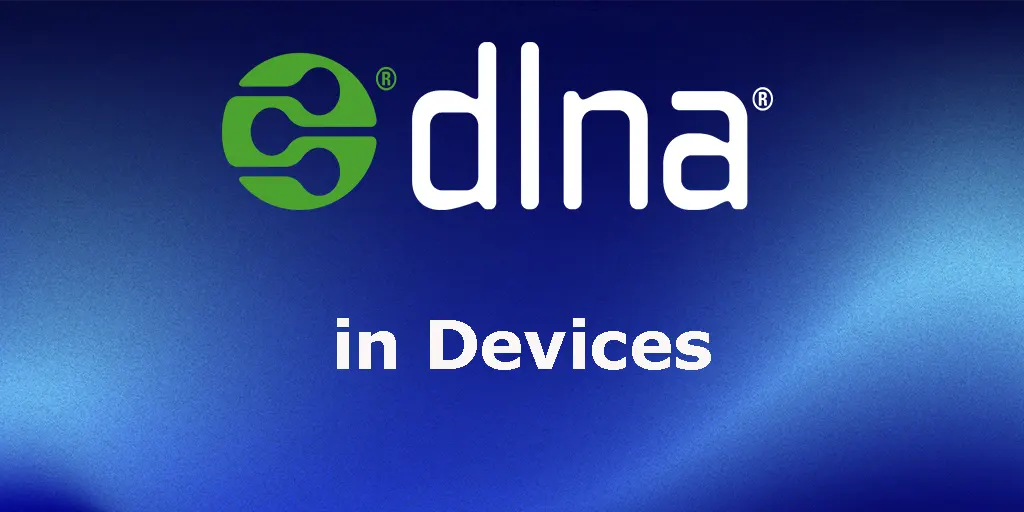The Digital Living Network Alliance (DLNA) is a non-profit organization founded in 2003. Its primary goal is to develop standards for easy sharing of digital media files between various devices on a home network, such as televisions, computers, smartphones, and other multimedia devices.
How Does DLNA Work?
DLNA operates within a local network, requiring devices to have IP addresses within the same subnet (e.g., 192.168.1.10 and 192.168.1.20). It uses a set of protocols that facilitate the transfer of information between compatible devices.
Setting Up DLNA
To use DLNA, a server (usually a computer running a special program) scans the local network for DLNA-compatible devices. Once such devices are found, a unified network is established, allowing features like “Media Sharing” or “DLNA Server” to be activated. This enables users to watch videos stored on their computer directly on their TV screen.
The Rise and Decline of DLNA
DLNA technology became widespread with the introduction of smart TVs around 2010, significantly simplifying the sharing of local media files. Before DLNA, users often had to copy videos to USB drives or connect computers to TVs via HDMI to play content. DLNA removed these inconveniences, making it easy to transfer media over a local network, especially from computers to TVs.
However, with the rise of streaming services in 2016, the need for local media storage and, by extension, DLNA began to decline. Smart TV apps provided access to vast libraries of online content, reducing the demand for local files and DLNA functionality.
DLNA’s decline was further accelerated by technologies like Google Chromecast and Apple AirPlay. These solutions allow users to instantly stream content from devices to TVs with just one click, eliminating the need for media server programs. As a result, DLNA, once a crucial technology for home entertainment, gradually lost its relevance as more convenient streaming solutions emerged.
DLNA and Compatible TVs
According to the DLNA Alliance, more than 4 billion devices have been certified by DLNA. However, it is unclear how many of these devices are still in active use and how many have become outdated or discarded.
Manufacturers have gradually stopped certifying their products for DLNA:
- Samsung: Stopped certifying TVs for DLNA in 2015 and mobile devices in 2016.
- LG: Ended DLNA certification for TVs in 2016, though DLNA-compatible models continued to be released for a while.
- Sony: Ceased DLNA certification for TVs in 2017.
- Panasonic: Stopped DLNA certification for TVs in 2019.
Thus, DLNA, once a robust solution for media file sharing, is becoming increasingly obsolete as new streaming technologies take its place.
Categories of DLNA-Compatible Devices
| Category | Description |
|---|---|
| Home Network Devices (HND) | Network storage, audio and video players, televisions, music centers, printers |
| Digital Media Servers (DMS) | Devices that store and share digital content |
| Digital Media Players (DMP) | Devices designed to play digital content |
| Digital Media Controllers (DMC) | Devices that control the playback and sharing of digital media |
| Digital Media Renderers (DMR) | Devices that display and play media files |
| Mobile Devices (MHD) | Mobile phones, portable players, handheld computers, photo/video cameras |
| Mobile Digital Media Servers (M-DMS) | Devices that act as mobile digital media servers |
| Mobile Digital Media Players (M-DMP) | Devices designed to play digital content on the go |
| Mobile Digital Media Downloaders (M-DMD) | Devices that facilitate the downloading of digital media content |
| Mobile Digital Media Uploaders (M-DMU) | Devices that allow uploading of digital media content |
| Mobile Digital Media Controllers (M-DMC) | Devices that control the playback of digital media |
| Home Interoperability Devices (HID) | Devices that support additional communication standards and convert data formats to ensure compatibility across technologies |










